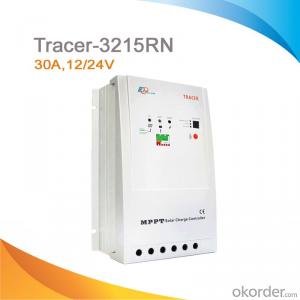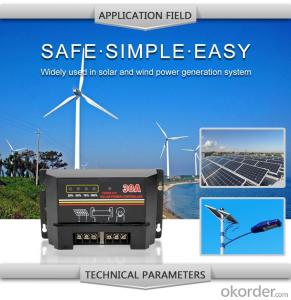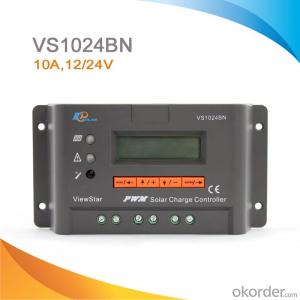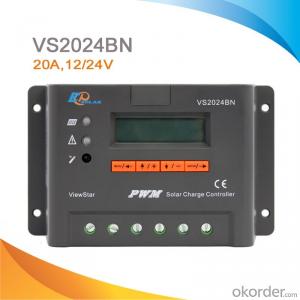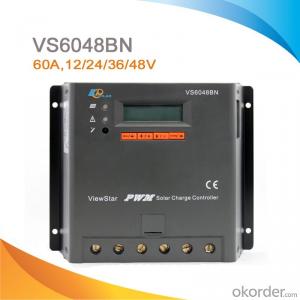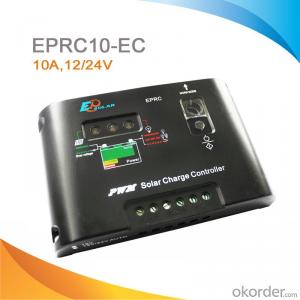Electric Fence Solar Powered Controllers - LCD/LED High Quality PWM Solar Street Light Charge Controller/Regulator with CE ROHS, 60A, 12V/24V, VS6024BN
OKorder Service Pledge
OKorder Financial Service
You Might Also Like
Descriptions:
A solar inverter, or PV inverter, or Solar converter, converts the variable direct current (DC) output of a photovoltaic (PV) solar panel into a utility frequency alternating current (AC) that can be fed into a commercial electrical grid or used by a local, off-grid electrical network. It is a critical BOS–component in a photovoltaic system, allowing the use of ordinary AC-powered equipment. Solar inverters have special functions adapted for use with photovoltaic arrays, including maximum power point tracking and anti-islanding protection.
Features:
·Excellent EMC design
·32 bit MCU with high speed
·High efficient Series PWM charging
·Four battery type options: Sealed, Gel, Flooded, and USER
·Intelligent lighting and timer control for solar lighting system
·12 bit A/D high-precision sampling to ensure accuracy
·Use MOSFET as electronic switch
·Full control parameters setting and modification, diversified load control mode
·Humanized design of browser interface, undertake every operating conveniently
·Temperature compensation
·Adopt graphics dot-matrix LCD screen and HMI (human-machine interface) with 4 buttons,integrated menu displaying and operation
Electronic Protections:
·PV short circuit protection
·PV reverse polarity protection
·Battery overcharge protection
·Battery over discharge protection
·Battery reverse polarity protection
·Load overload protection
·Load short circuit protection
·Overheating protection
Specification:
Model | VS1024BN | VS2024BN | VS3024BN | VS4524BN | VS6024BN |
Nominal system voltage | 12V/24V auto work | ||||
Rated battery current | 10A | 20A | 30A | 45A | 60A |
Rated load current | 10A | 20A | 30A | 45A | 60A |
Max. battery voltage | 32V | ||||
Equalize charging voltage | Sealed: 14.6V, Flooded: 14.8V, User-defined: 9~17V | ||||
Boost charging voltage | Gel: 14.2V, Sealed: 14.6V, Flooded: 14.8V, User-defined: 9~17V | ||||
Float charging voltage | Gel /Sealed /Flooded: 13.8V, User-defined: 9~17V | ||||
Low voltage reconnect voltage | Gel /Sealed /Flooded: 12.6V, User-defined: 9~17V | ||||
Low voltage disconnect voltage | Gel /Sealed /Flooded: 11.1V, User-defined: 9~17V | ||||
Self-consumption | ≤15mA(12V); ≤10mA(24V); ≤9mA(36V); ≤8mA(48V) | ||||
Grounding | Common negative | ||||
Temp. compensation | -3mV/°C/2V | ||||
Relative humidity | 10%~90% Non-condensation | ||||
Communication | RS485 / RJ45 interface | ||||
LCD temperature | -20°C ~ +70°C | ||||
Working temperature | -25°C ~ +55°C | ||||
Humidity | ≤95% N.C. | ||||
Enclosure | IP30 | ||||
Overall dimension | 162x85x40mm | 162x100x50mm | 200x103x58mm | 201x109x59mm | 205x129x67mm |
Terminals | 4mm2 | 10mm2 | 16mm2 | 35mm2 | 35mm2 |
Net weight | 0.2kg | 0.4kg | 0.7kg | 0.9kg | 1.3kg |
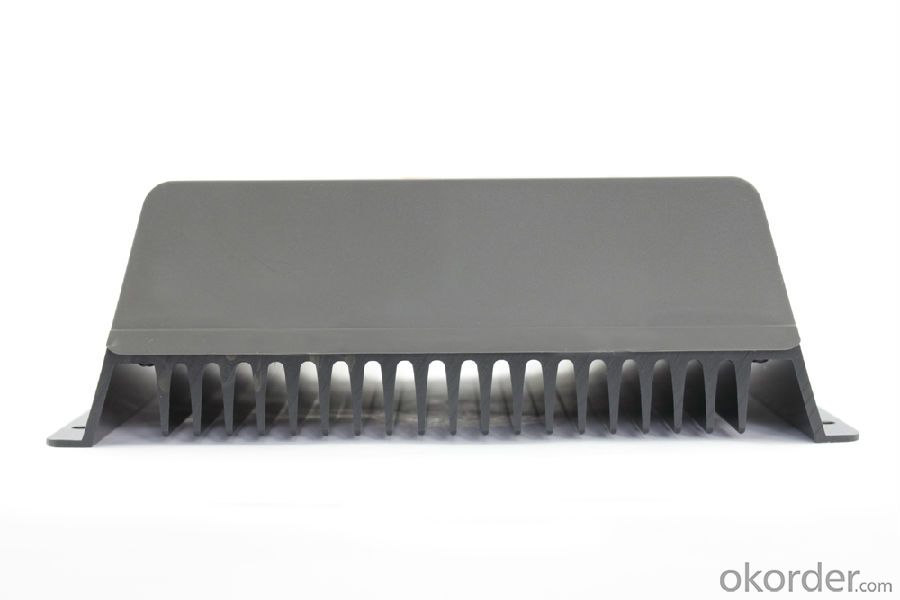
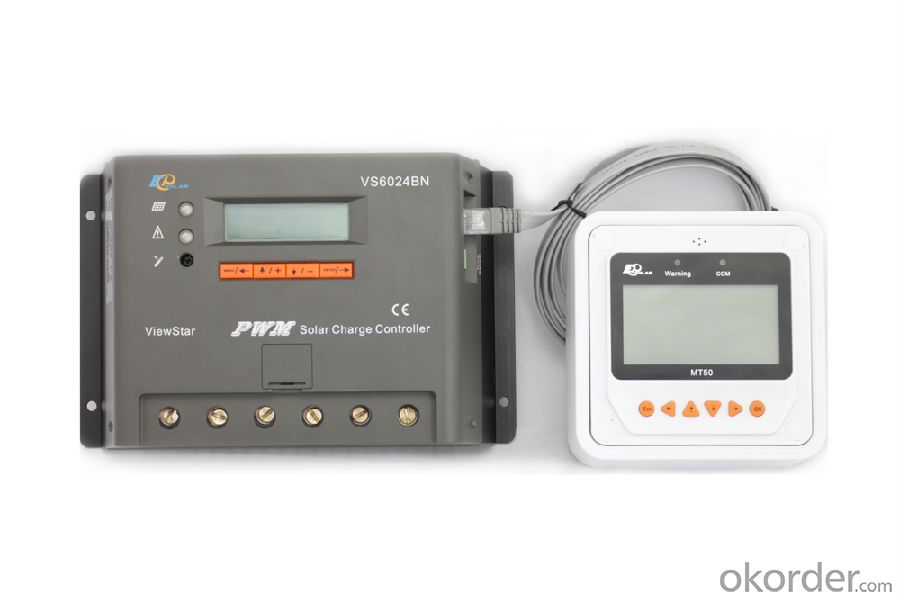
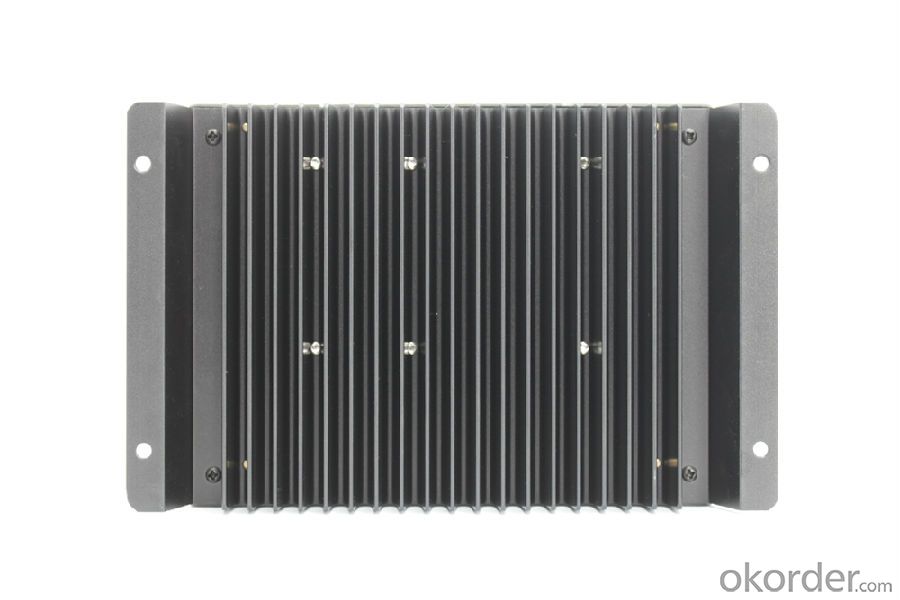
- Q: Can a solar controller be used with a solar-powered irrigation pump?
- Yes, a solar controller can be used with a solar-powered irrigation pump. The solar controller helps regulate and optimize the power generated by the solar panels to efficiently supply power to the irrigation pump, ensuring that it operates effectively and maximizes the use of solar energy.
- Q: Can a solar controller be used with thin-film solar panels?
- Yes, a solar controller can be used with thin-film solar panels. A solar controller is an essential component in any solar power system, regardless of the type of solar panels being used. Its main function is to regulate the charging of batteries and prevent overcharging or damage to the batteries. Thin-film solar panels are a type of solar technology that uses a thin semiconductor material to capture sunlight and convert it into electricity. They are known for their flexibility, lightweight nature, and ability to work well in low light conditions. When using thin-film solar panels, it is still important to have a solar controller to ensure that the charging process is properly managed. The solar controller will monitor the voltage and current coming from the panels and adjust the charging rate accordingly. This helps to protect the batteries from being overcharged, which can reduce their lifespan. In addition, a solar controller can also provide other functions such as temperature compensation, load control, and monitoring capabilities. These features can be beneficial in maximizing the efficiency and performance of the thin-film solar panel system. Therefore, whether it is a traditional crystalline silicon solar panel or a thin-film solar panel, a solar controller is a necessary component to ensure the safe and efficient operation of the system.
- Q: What are the safety features of a solar controller?
- Some common safety features of a solar controller include overcharge protection, short circuit protection, reverse polarity protection, and over-discharge protection. These features help prevent damage to the solar controller and the connected battery system, ensuring safe and efficient operation.
- Q: Can a solar controller be used with solar panels that are connected to a solar air conditioning system?
- Yes, a solar controller can be used with solar panels that are connected to a solar air conditioning system. A solar controller is typically used to regulate the charging and discharging of batteries in a solar power system. In the case of a solar air conditioning system, the solar controller can help manage the power generated by the solar panels and ensure that it is efficiently utilized to power the air conditioning unit. This helps optimize the system's performance and maximize energy savings.
- Q: Can a solar controller work with different types of solar panels?
- Yes, a solar controller can work with different types of solar panels as long as the voltage and current ratings of the panels are within the specifications and capabilities of the controller.
- Q: How does a solar controller handle battery over-discharge protection?
- A solar controller handles battery over-discharge protection by monitoring the voltage level of the battery. When the voltage drops below a certain threshold, the controller will automatically cut off the power supply from the solar panels to prevent further discharge and protect the battery from damage.
- Q: What is the maximum temperature range for a solar controller?
- The maximum temperature range for a solar controller typically varies depending on the specific model and manufacturer. However, in general, solar controllers can withstand temperature ranges from -40°C to +85°C (-40°F to +185°F).
- Q: Can a solar controller handle high temperatures?
- Yes, a solar controller is designed to handle high temperatures. It is typically built with heat-resistant materials and has built-in mechanisms to dissipate heat effectively, ensuring its proper functioning even in hot weather conditions.
- Q: How does a solar controller handle variations in ambient light conditions?
- A solar controller is designed to efficiently regulate and optimize the charging process of a solar panel system based on ambient light conditions. It uses advanced technology and algorithms to handle variations in light intensity and adjust the charging parameters accordingly. One of the primary functions of a solar controller is to monitor the voltage and current generated by the solar panels. When there is sufficient sunlight, the controller detects a higher voltage and current, indicating optimal charging conditions. In response, it adjusts the charging parameters to allow maximum power transfer from the panels to the battery, ensuring efficient charging. However, as ambient light conditions change, the solar controller needs to adapt to ensure the system's optimal performance. During low light conditions, such as cloudy or overcast days, the controller detects a drop in voltage and current. In such cases, it reduces the charging parameters to prevent overcharging the battery, which could lead to damage or reduced lifespan. Conversely, during periods of high light intensity, such as sunny days, the controller detects an increase in voltage and current. To prevent overloading the battery, it adjusts the charging parameters to limit the amount of power transferred, ensuring the battery is charged safely and efficiently. Furthermore, a solar controller may also incorporate additional features like temperature compensation to handle variations in ambient temperature. As temperature affects the charging process, the controller adjusts the charging parameters accordingly to compensate for temperature fluctuations and maintain optimal charging conditions. In summary, a solar controller effectively handles variations in ambient light conditions by continuously monitoring and adjusting the charging parameters based on the voltage and current generated by the solar panels. This ensures that the solar panel system operates efficiently, maximizes power transfer, and protects the battery from overcharging or other potential issues.
- Q: Are there any environmental benefits of using a solar controller?
- The utilization of a solar controller brings forth various environmental advantages. Firstly, it aids in maximizing the efficiency of solar panels by effectively regulating the electricity generated and transferred to the battery or grid. This regulation ensures optimal performance, ultimately reducing the necessity for additional energy sources like fossil fuels, which are known contributors to air pollution and greenhouse gas emissions. Consequently, the utilization of a solar controller can effectively diminish the carbon footprint associated with energy generation. Secondly, solar controllers have the capacity to prolong the lifespan of batteries used in solar systems. By preventing overcharging or deep discharging, these controllers effectively maintain the health and efficiency of batteries, reducing the need for premature replacements. This reduction in battery waste is critical in minimizing environmental impact, as batteries consist of toxic chemicals that can detrimentally affect the ecosystem if not disposed of properly. Additionally, solar controllers often incorporate advanced features, such as MPPT (Maximum Power Point Tracking) technology, which optimizes the energy conversion process from the solar panels. By extracting the maximum amount of power from the panels, MPPT controllers enhance overall system efficiency, thereby reducing the need for additional solar panels and conserving natural resources. In conclusion, the utilization of a solar controller offers numerous environmental benefits, including decreased reliance on fossil fuels, minimized carbon emissions, reduced battery waste, and improved energy conversion efficiency. By effectively harnessing the power of solar energy, solar controllers contribute to a more sustainable and eco-friendly future.
Send your message to us
Electric Fence Solar Powered Controllers - LCD/LED High Quality PWM Solar Street Light Charge Controller/Regulator with CE ROHS, 60A, 12V/24V, VS6024BN
OKorder Service Pledge
OKorder Financial Service
Similar products
Hot products
Hot Searches
Related keywords













